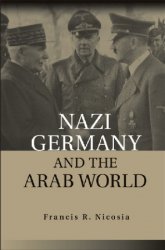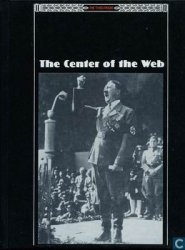Against a backdrop of centuries of interethnic tension, government-sponsored segregation, rising nationalism, and sporadic violence, Kiev's ethnic and religious groups got along better than might have been expected, in the period before 1905 and even to some extent in the years after. Russian Jews could not hope for full acceptance into the fabric of urban society, but the extent of their integration ranged widely from outright segregation or rejection to grudging toleration to acceptance—the latter especially to be found in the world of voluntary associations. In many ways the same was true for other European societies, notwithstanding the broader rights that Jews formally enjoyed; in German, Austrian, and Hungarian cultural contexts, for example, modernity and emancipation ushered in Jewish acculturation but not necessarily full integration or assimilation—if these were indeed possible (or even desirable).101 The examples of interethnic contact and collaboration that we have seen in Kiev were probably fairly unusual, but they are nonetheless strikingly similar—both in quality and in relative rarity—to what we might observe in the cities of Central Europe.
In Central as in Eastern Europe, integration in all its varieties was often accompanied by a measure of adaptation to the culture and norms of the hegemonic society, but as Jonathan Frankel writes, "The loss of linguistic and cultural distinctiveness [does not] necessarily bring. . . with it a loss of ethnic identity."102 To be sure, many and even most Jews had no desire entirely to lose their Jewish identity even if they could, and even the term identity itself is made more complex by the reality of situational ethnicity, the individual's ability to consciously emphasize or deemphasize his or her identification depending on the context.103 Identity is almost never a zero-sum game.104 As Harriet Murav has shown in her study of avraam Uri Kovner, when Jews took on aspects of Russian identity, they often made themselves more, not less, suspect in the eyes of ethnic Russians, because they were seen as attempting to disguise their true nature.105 This may help to explain why Jewish acculturation from Berlin to Odessa usually took place within a specifically Jewish sphere; Jews identified as German, Hungarian, or even "Russian" (rossiiskii) even as they maintained a particularly "Jewish" social and professional profile and even as their primary associational circles continued to consist almost exclusively of other Jews.106 Another pan-European phenomenon were the separate Jewish welfare institutions that were meant to anchor Jews in their milieus but instead all too frequently underlined Jewish difference.107 Growing secularization among European Jews (including those in the Russian Empire) meant that more and more of them were finding the voluntary association, and not the traditional Jewish hevra, an ideal instrument for the expression of their most cherished values and ideals, as well as an alternative to the conflict-ridden official Jewish community [obshchina, Gemeinde].108
Moreover, the Russian Empire was not unique in the choices that it forced Jews to make. Across multiethnic Central and Eastern Europe, as hegemonic imperial cultures slowly gave way to regional and usually nationalist cultures, Jews had to choose to which society or culture it was most prudent to acculturate. We must also remember that the choice on the part of Jews to join non-Jewish organizations cannot always be ascribed to a conscious attempt to integrate into the larger surrounding society.109 The many opportunities available outside the Jewish community for making social change, defending one's rights, or participating in leisure activities proved a powerfully attractive force for some Jews. As in Kiev, it was Jews of the middle class and haute bourgeoisie who were the most likely to participate in general civic culture, but working-class Jews crossed ethnic and religious lines as well.
But when evaluating the implications of mixed-membership associations in the Russian imperial context, it is impossible to divorce them from the generally hostile environment in which Russian Jews found themselves in the last years of tsarist rule—the terrible post-1905 decade, when Kiev's Jews were said to live "with a sword hanging over their heads."110 In those years, events and policies on the national stage created an atmosphere of intolerance and fostered clannishness and self-segregation. For all the similarities we have seen among European Jews across the continent, the fact that Russian Jews were without civil rights and faced a constant threat of violence made their circumstances decidedly different. They were challenged not only by the ingrained hostility and prejudice of imperial society but also by the antagonism of the Russian state, a state that, at least in its dying years, was determined to saddle its Jews with ever more legal disabilities and to stir up national and even world opinion against them. Thus, imperial Russia's growing civil society could serve both as a neutral territory where Jews, Ukrainians, and Russians could come together as well as a space in which old habits of ethnic particularism—as well as new forms of xenophobia—could thrive even in an atmosphere of ostensible egalitarianism. In this environment, voluntary societies could bring people together but could also be used to keep them apart, as is clear in the case of the Jewish school or branch—with specifically Jewish funding—within the larger voluntary association.111 Clubs that espoused ethnic chauvinism as their primary raison d'etre are an even more extreme example of this trend.
The possibility must be entertained, then, that some Jewish members of mixed-membership associations saw them as prophylactics against the threat of pogrom, while others viewed their continued engagement with nonJewish Kievans as a philosophical statement in the face of anti-Jewish violence and continuing state persecution. Both possibilities have far-reaching implications for scholars: the former is a strong statement about the reach and efficacy of the voluntary association and its impact on society, while the latter is a conviction that historians must take as seriously as those expressed in political brochures and at party conferences.
As Joseph Bradley has shown, civil society and its voluntary associations provide a key with which to unlock many of the riddles of imperial Russian society, and one that helps the scholar "to understand the civil society that [Russia] did achieve" rather than "explain[ing] the liberal-democratic civil society that Russia clearly did not become."112 In other words, we must strive to see what was, rather than what was not. Voluntary associations can indeed be used as a microscope of sorts through which to examine Russian Jews and their Christian neighbors on the levels of their most mundane interactions. In the context of the late empire, however, even the least of these interactions was far from ordinary, and that they occurred at all is significant in and of itself.




 World History
World History









